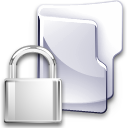
Most security specialists say that though hackers and phishers are their primary enemies, the ones doing the most damage to their system are the end users. End users may inadvertently let malware on their computers by clicking an attachment or entering an untrustworthy site, but no matter how many times they’re warned and educated about these threats they go on doing the same things.
An article in Dark Reading compiled by their staff lists down ten of the most dangerous behaviors end user do that could compromise the security. Though this isn’t the first list ever made about this issue (nor will it be the last) the themes it had in common with a few other lists I found were:
- Visiting, downloading and installing freeware from sources you’re not sure of. No one would admit it, but chances are users will find a way to visit gambling and porn sites even if they’re banned. They just look for one that’s currently not in the banned list. Music and game downloads sites can also house unseen code that can exploit the computer.
- Disabling the very same security precautions intended to keep you safe. This is especially true for firewalls, anti-virus software, and WiFi connections. Some might find their connection speed lowered by constant reminders of security precautions like password changes, patch updates, and automated virus updates.
- Password precautions. End users may be sharing their passwords with friends and family, increasing the risks of security breaches. Some, for the sake of remembering them easily, use dictionary words and jot them down or save them in their mobiles.
- Clicking on links and attachments from friends and even perfect strangers. It’s only too true that most people click before checking if a link’s legitimate or not, especially for phishing e-mails. And even links from friends on an instant messenger service can be a scam to deliver trojans to your computer.
[tags]dangerous things to do online, list, security, password[/tags]